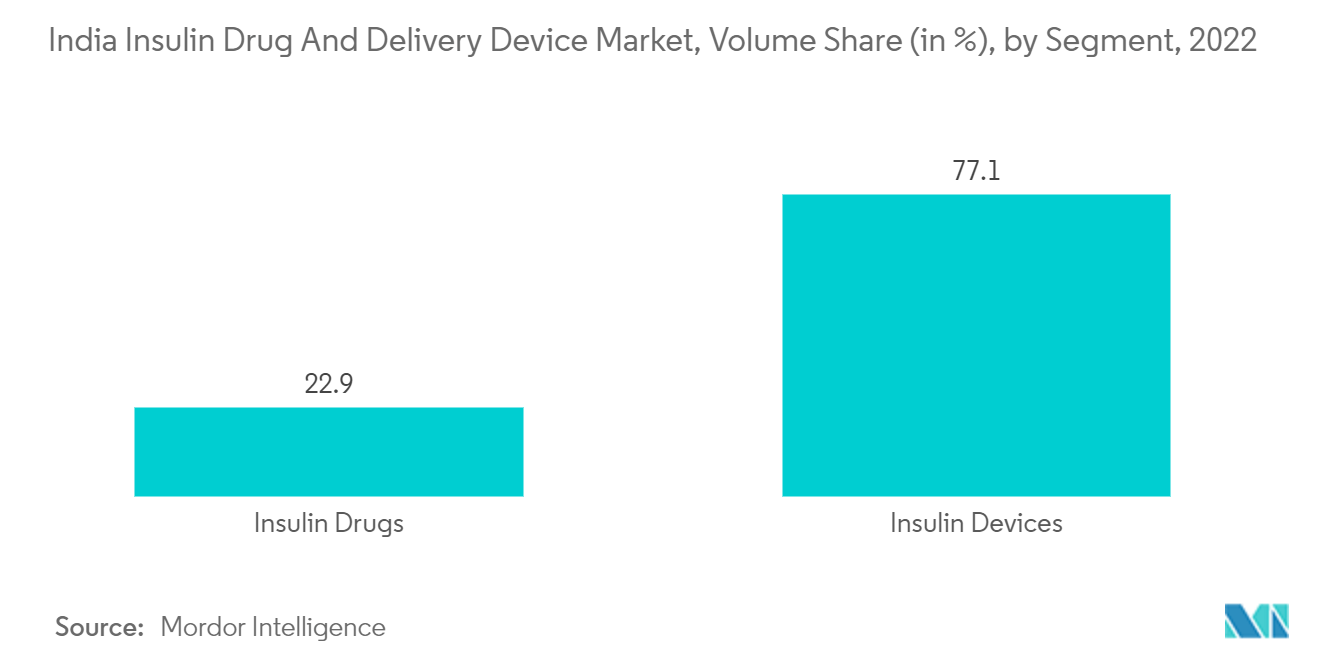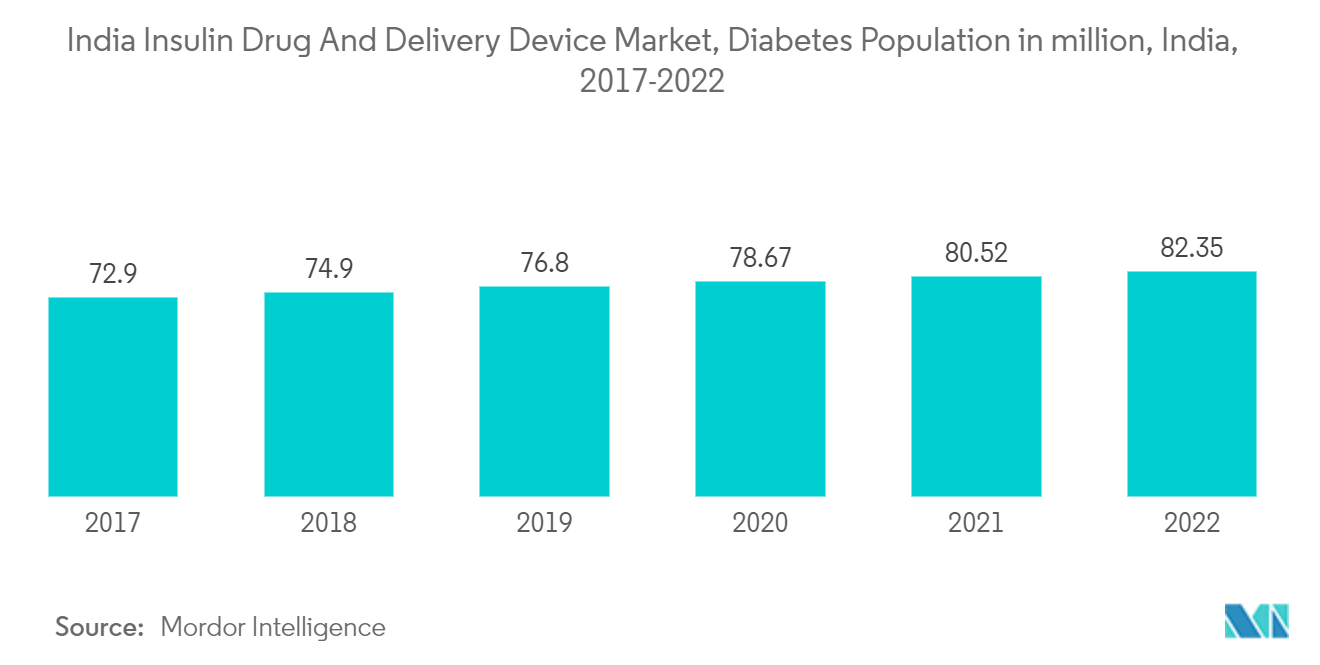Market Trends of India Insulin Drug And Delivery Device Industry
Insulin Devices is having highest volume share in the current year
Despite these difficulties, the market for insulin medications and delivery devices in India is strong since there is no alternative main choice. Several commercial activities have been undertaken to improve insulin affordability. The recent introduction of biosimilar insulin products, as well as the prospect of automated interchangeability between biosimilar insulin and original medicines, may assist lower out-of-pocket expenditures. Insulin pump treatment is a well-known insulin delivery technique for people with type 1 diabetes (T1DM). Pumps are a recognized, time-tested treatment alternative for T1DM patients of all ages, providing near-physiological insulin administration when the pancreas does not make insulin. There are also pump variants with remote controllers that allow parents to suspend or bolus insulin from a distance while their child is playing or eating. When compared to injections, insulin infusion pumps prevent big fluctuations in blood glucose levels, cause less discomfort, and dispense more precisely. The benefits of insulin pumps over traditional delivery systems are projected to drive market growth. The market also benefits significantly from the steady increase in the number of suppliers, R&D activities, technical developments in goods, and the worldwide availability of innovative items. Furthermore, favorable reimbursement situations in wealthy countries, as well as an increase in awareness programs in developing economies, are working in the market's favor.
Insulin delivery device technological developments have developed over time, enabling safer and more precise insulin administration. As a result of the aforementioned reasons, the studied market is expected to increase throughout the analysis period.

Rising diabetes prevalence
In India, Diabetes Population is expected to increase with a CAGR of more than 1% over the forecast period.
Diabetes presently affects more than 80 million people in India and is anticipated to impact 10% of the Indian population by 2027. Obesity, particularly central obesity and increased visceral fat due to inactivity, as well as consumption of high-calorie/high-fat and high-sugar diets, are major risk factors for diabetes in Indians. The country's most popular work culture, which consists of sitting for hours in one position and eating fast food with little or no physical exercise, is a major contributor to diabetes in the working-age population, leading to a significant increase in diabetes cases in India.
According to the International Diabetes Federation (IDF), diabetes accounts for 10% of global health spending in India. According to the Government of India's Ministry of Health and Family Welfare, noncommunicable diseases (NCDs) account for 60% of all fatalities in India. Diabetes, cardiovascular disease, cancer, chronic respiratory disease, and other non-communicable diseases. To prevent and control major NCDs, the National Program for the Prevention and Control of Cancer, diabetic, cardiovascular diseases, and Stroke (NPCDCS) includes medical education, health awareness in schools, and diabetic urban design. Diabetes is a data management condition that demonstrates how real-world health and treatment data collection enables integrated and personalized chronic illness management. Both patients and diabetes care providers use continuously collected metabolic, pharmacological, and lifestyle data when making collaborative treatment decisions. Digital health technology, such as digital health applications, aids in diabetes self-management. Diabetes apps facilitate the adoption of lifestyle modifications for diabetes prevention and treatment, as well as the assessment of blood glucose control quality and insulin dose. Integration of Blood Glucose Monitoring with insulin calculators, automated insulin titration software, and remote coaching are other developments that provide patients with poorly controlled diabetes with the extra support they need to improve critical outcomes, thereby improving market prospects in the coming years.


